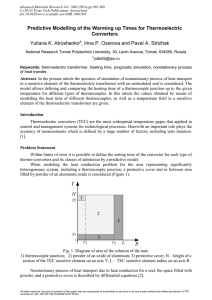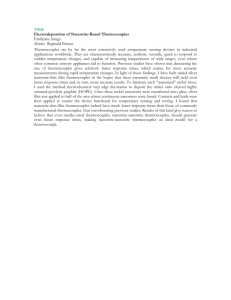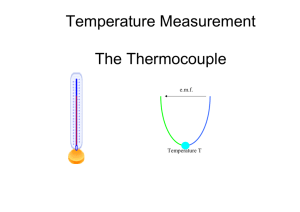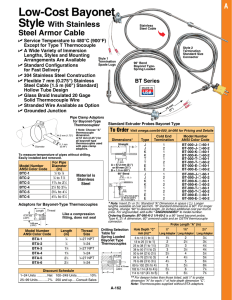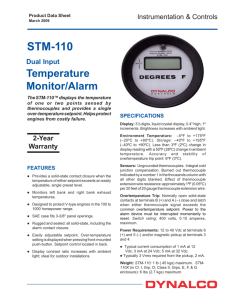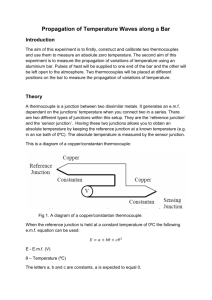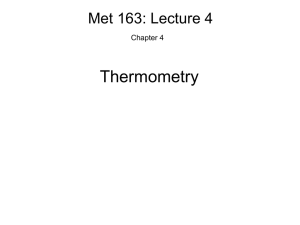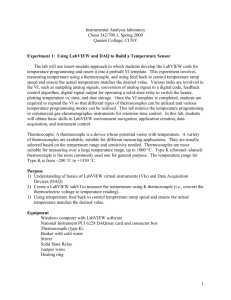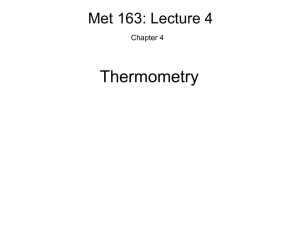Enhanced Capillary Evaporation on
advertisement
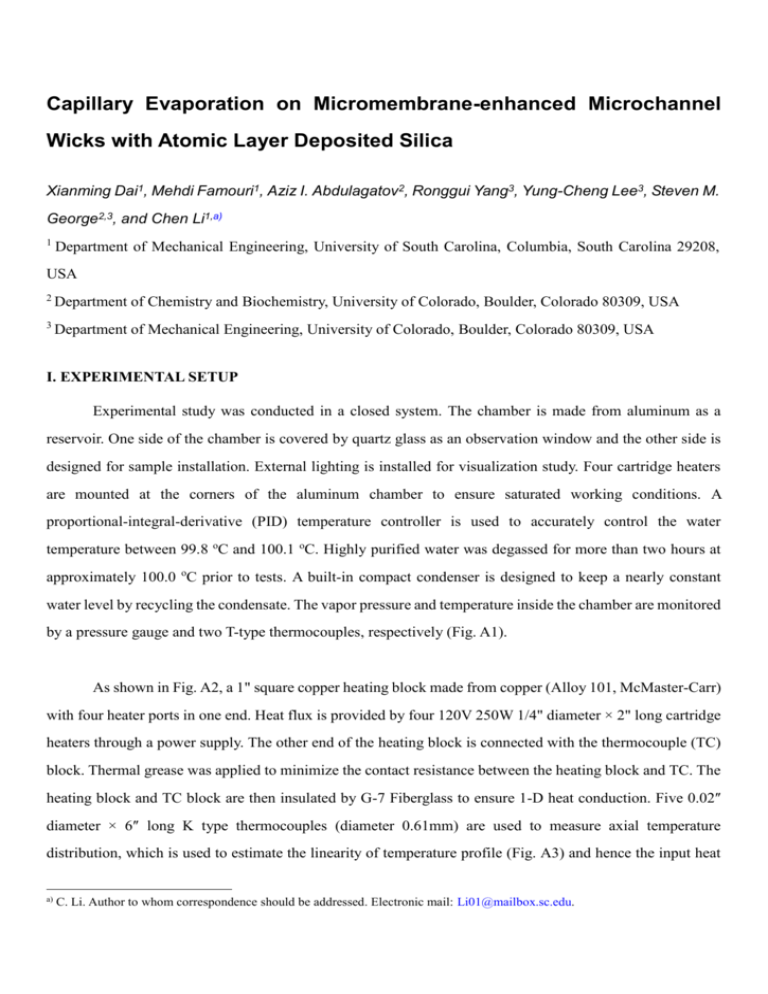
Capillary Evaporation on Micromembrane-enhanced Microchannel Wicks with Atomic Layer Deposited Silica Xianming Dai1, Mehdi Famouri1, Aziz I. Abdulagatov2, Ronggui Yang3, Yung-Cheng Lee3, Steven M. George2,3, and Chen Li1,a) 1 Department of Mechanical Engineering, University of South Carolina, Columbia, South Carolina 29208, USA 2 Department of Chemistry and Biochemistry, University of Colorado, Boulder, Colorado 80309, USA 3 Department of Mechanical Engineering, University of Colorado, Boulder, Colorado 80309, USA I. EXPERIMENTAL SETUP Experimental study was conducted in a closed system. The chamber is made from aluminum as a reservoir. One side of the chamber is covered by quartz glass as an observation window and the other side is designed for sample installation. External lighting is installed for visualization study. Four cartridge heaters are mounted at the corners of the aluminum chamber to ensure saturated working conditions. A proportional-integral-derivative (PID) temperature controller is used to accurately control the water temperature between 99.8 oC and 100.1 oC. Highly purified water was degassed for more than two hours at approximately 100.0 oC prior to tests. A built-in compact condenser is designed to keep a nearly constant water level by recycling the condensate. The vapor pressure and temperature inside the chamber are monitored by a pressure gauge and two T-type thermocouples, respectively (Fig. A1). As shown in Fig. A2, a 1" square copper heating block made from copper (Alloy 101, McMaster-Carr) with four heater ports in one end. Heat flux is provided by four 120V 250W 1/4" diameter × 2" long cartridge heaters through a power supply. The other end of the heating block is connected with the thermocouple (TC) block. Thermal grease was applied to minimize the contact resistance between the heating block and TC. The heating block and TC block are then insulated by G-7 Fiberglass to ensure 1-D heat conduction. Five 0.02″ diameter × 6″ long K type thermocouples (diameter 0.61mm) are used to measure axial temperature distribution, which is used to estimate the linearity of temperature profile (Fig. A3) and hence the input heat a) C. Li. Author to whom correspondence should be addressed. Electronic mail: Li01@mailbox.sc.edu. flux. High temperature RTV silicone is used to seal all gaps and sample port. Only the woven meshes are exposed in the saturated vapor. The whole heating elements outside the chamber are well insulated by high temperature Nelson Firestop Ceramic Fibers. II. DATA REDUCTION Data are reduced and categorized into the parameters from Eqs. 1 to 3. q" k T x Tw T5 q" h (1) x ' k q" Tw T s a t (2) (3) where, q″ is the input heat flux, k is the thermal conductivity of copper; ∆T is the temperature difference between two thermocouples; ∆x is the distance between two thermocouples as shown in Fig. A3; Tw is the estimated temperature of the surface; T5 is the temperature of the thermocouple 5; ∆x' is the distance from thermocouple 5 to the evaporating surface; Tsat is the saturated water temperature; and h is the evaporation heat transfer coefficient. The uncertainties of the temperature measurements and the length or width are ± 0.5 K and 0.01 mm, respectively. Uncertainty propagations computed by Kline and McClintock method1 indicate the following 95% confidence level for the computed results in most of the ranges: the heat flux was less than ± 3.2 W/cm2; the heat transfer coefficient was less than ± 1.2 W/(cm2·K); and the superheat T = Tw - Tsat was less than ± 0.8 °C. Heat loss below the 1×1 cm2 heating area was also estimated, which was less than 4%. III. SUPPLEMENTARY VIDEOS The visualization system consisted of a high-speed camera (Phantom V 7.3), an infinity K2/SC long dist micro single port main body (VRI-INFINITY-K2SC), a CF-2 objective (VRI-MICRO-990214) and a NIKON T2 adapter (VRI-MICRO-770568). The four videos were taken at 3000 fps (frames per second) and replayed at 45 fps. Each video had enough duration to show the whole oscillating cycles. The working conditions for the visualization studies were described in the manuscript. The photo of the visualization setup was shown in Fig. A4. IV. TWO DIMENSIONAL MODEL Because of the symmetry lines (Figure A5-a), only one unit of hybrid wick has been chosen to be simulated (conduction heat transfer). As it is depicted in Figure A5-b, dark gray area represents the micro-channels and light gray represent combination of fluid and mesh. In order to simplify mesh and fluid, a T-shape has been taken out (Figure A5-b) and replaced by fluid, being said, thermal properties for this area (light gray) are averaged values based on thermal properties of mesh and fluid. Also, boundary conditions have been illustrated in the Figure A5-b. Please note that constant temperature at the bottom and h∞ are calculated based on this paper's experimental results and T∞ is the saturation temperature. References 1 S. J. kline and F. A. McClintock, Mech. Eng. 75, 3 (1953). Figure A1. Experimental setup for the capillary evaporation in vertical directions. Four cartridge heaters are shown as 1, 2, 3 and 4. Five thermocouples (TC) are shown as TC1 to TC5. Figure A2. Schematic of the test sample assembly and images of the real sample. 1, 120V 250W 1/4" diameter × 2" long cartridge heater; 2, 1" copper heating block with 4 holes on the left side and 1 hole on the right side; 3, 1 cm × 1 cm square copper block with five holes for thermocouples; 4, 0.02″ diameter × 6″ long K type thermocouple; 5, Screw; 6, G-7 fiberglass; 7, High temperature RTV silicone; 8, 10 mm wide × 0.8 mm thick × 50 mm long hybrid wicks; 9, Photo of the hybrid wicks; 10, Photo of the square copper block; 11, SEM image of the hybrid structure. x T5 x ' Figure A3. Thermocouple arrangement and parameters for data reduction. Figure A4. Photo of the visualization setup. (a) (b) Figure A5. (a) one unit of hybrid mesh in the neighborhood of others (b) model and boundary conditions used for simulation
